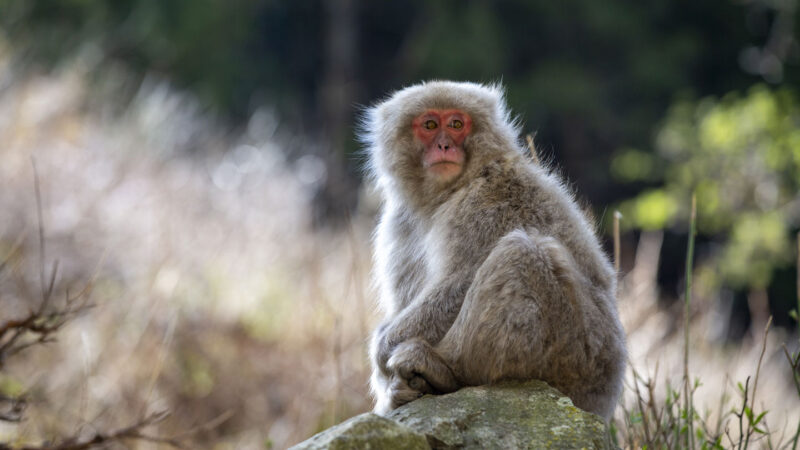
Though masturbation is common across the animal kingdom, it seems, at its face, to be an evolutionary paradox: Why would an animal waste time, energy and reproductive resources on self-pleasure instead of copulating with a partner?
Studies on individual species have found some explanations. Low-ranking Japanese macaques (Macaca fuscata), for example, masturbate to keep their sperm fresh for when they get a rare chance to mate. But the questions of when and why masturbation evolved in the first place have remained unsolved.
A new study, published in the June 7 Proceedings of the Royal Society B, suggests that the evolutionary history of masturbation in primates extends back at least 40 million years, and the behavior might indeed help male primates be ready to mate when they get the chance, and also stay free of disease.
The authors are “the first to use a cross-species approach” to explore the function of masturbation, says Lateefah Roth, a biologist at the Institute of Forensic Psychiatry and Sex Research at the University of Duisburg-Essen in Germany. It’s “a great starting point,” Roth says.
To determine when masturbation first evolved in primates, evolutionary biologist Matilda Brindle of University College London and colleagues sifted through the scientific literature to find records of which primates masturbate and which do not, whether in the wild or in captivity.
To fill gaps in the data due to masturbation not always being easy to observe (or looked for at all) by biologists, Brindle also sent out questionnaires to researchers to ask about their observations of primate masturbation that weren’t reported in the literature. This was especially important for information on female masturbation, Brindle says, which tends to go unnoticed because of a lack of an easy-to-spot erection. The team then used computer analyses to determine where in the primate lineage the behavior most likely originated.
Because of missing data, Brindle can’t definitely say whether the first ever primates masturbated. But she can say that from around 40 million years ago, “the ancestors of all monkeys and apes” seemed to have masturbated. This would be around when simians — apes and monkeys — split from the tarsiers, diminutive, bug-eyed primates that live in Southeast Asia.
Once Brindle had identified when, she next turned to why. She looked at whether primates that masturbate tend to mate with multiple partners. This mating system would lead to evolutionary pressure for both males and females to gain more control over the mating process, like by being able to copulate more quickly, being readily aroused for preferred partners or by improving male sperm quality, as seen in the macaques.
Brindle also looked to see if primate species that masturbate tend to be infected by more pathogens, including those that cause sexually transmitted infections. Male Cape ground squirrels (Geosciurus inauris), for instance, are known to masturbate after sex to cleanse their systems of infectious agents.
Brindle found that multiple mating partners and pathogen prevalence are associated with masturbation in male primates, but not in females. Masturbation can help males be ready to mate quickly with fresh sperm while also purging their reproductive tract of pathogens. But for females, the two hypotheses don’t mix. “Normally, the vagina is mildly acidic to keep pathogens at bay,” Brindle says, but it becomes less so when the female primate is aroused so that sperm aren’t killed on arrival. Making the vaginal environment safer for sperm also makes it safer for pathogens.
While the study found no correlation between female primate masturbation and having multiple mating partners, Brindle suspects that there probably is a relationship that would come to light with more data. “I would bet a lot of money on the fact that if we got more data down the line,” she says, “then we would find an effect for females.” The paucity of data for females may be driven in part by the historical tendency to think of female animals as “passive recipients of male behavior,” Brindle says.
The stigma around studying masturbation and sexual behavior has started to ease up, Brindle notes, which makes her hopeful that more discoveries will be made soon. But given that other mammals, as well as birds and reptiles, also masturbate, Roth says, “if we want to understand the bigger evolutionary picture of this behavior, we need to look beyond primates.”


